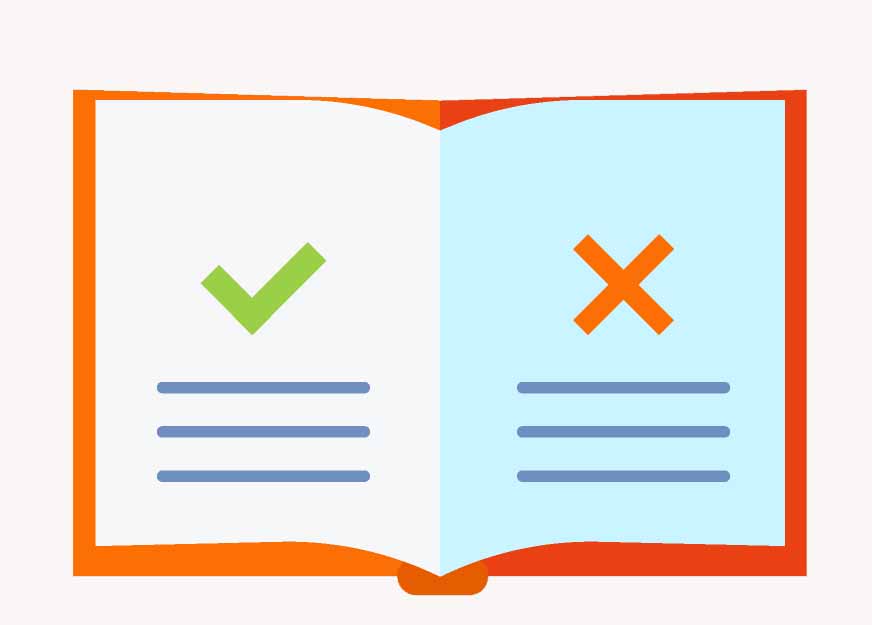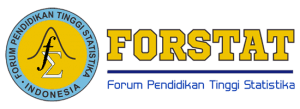Author Guidelines
Manuscript Submission
Jambura Journal Of Probability and Statistics (JJPS) receives scientific articles on various aspects related to the field of statistics. Articles can be in the form of research, case studies, and literature reviews. JJPS received a manuscript in areas of study Probability, statistics, and its applications. Manuscripts should be submitted online here. It is understood that the submitted paper is not being considered for publication in other journals. If a paper is accepted for publication in our journal, the author is assumed to have transferred the copyright to the Jambura Journals of Probability and Statistics. All articles for this journal must be submitted using our online submissions system.
Reviewing of Manuscripts
Each received paper will be sent to at least two reviewers for evaluation. We use the double-blind peer-review process. The decision is made based on the evaluation reports from the reviewers. Whenever necessary, we ask a third reviewer to evaluate the paper.
Form of Manuscript
The paper should be written in Bahasa Indonesia or English. Manuscripts should be prepared by using the provided template on MS Word (click HERE to download the template). Make sure that your paper has abstract, keywords and phrases. Avoid complicated formulas in the title as well as in the abstract.
IMPORTANT: Since the manuscript undergoes a double-blind review process, all author(s) personal information should be removed and excluded from the main document as well as file names. Please make sure the following are not included in your manuscript: names, acknowledgments, university information, contact information, etc. You would be able to add all this information later if your manuscript is accepted for publication.
Composition of Manuscripts
Manuscripts must contain at least the following material: title, author's name, affiliation and address, abstract and keywords, introduction, method or model, results and discussion, conclusion, acknowledgments (optional), and reference.
Title. Describe the main contents of the text in a concise and clear manner of a maximum of 14 words.
The author's full name. Written in full (not abbreviated) and without a title.
The full address of the author. The full name of the agency, the author's origin, the municipal agency's mailing address, postal code, and the country as well as the e-mail address for the correspondence.
Abstract and keywords. Abstracts must be presented in English and Indonesian. It should summarize the aim, method(s), and main result(s) of the research and their possible implications. If the paper is a survey paper, it must be indicated so in the abstract. List keywords no more than 6 words and represent the contents of the manuscript so that it makes it easier in the process of searching the manuscript.
Introduction. In compiling the introduction, the author explains the following matters: (1) the importance of the field of research being studied, (2) explains specifically about matters relating to the research conducted that has been studied by other researchers as a basis for information, (3) explain the need for research understudy to fill the research gaps that have existed, (4) explain the purpose of the research.
Method or Model. This method is optional for original research articles. This method is written descriptively and must provide a statement regarding the methodology used in the research. This method, as much as possible, gives an overview to the reader regarding the things that are done in the research, clear, complete, and structured. Highlight the approach to how data is analyzed, not how data is collected. This sub-chapter may also contain model construction which will be discussed in the results and discussion chapter.
Results and Discussion. The results and discussion present the results obtained briefly and can be supported by illustrations in the form of tables, pictures, or qualitative descriptions. Scientific findings obtained from the results of the research carried out are described in this chapter but must be supported by adequate data. The explanation of the findings in the research must be supported by relevant literature. The author is expected to dare to assess the strengths and weaknesses of research results obtained by comparing the results of research with hypotheses, quality standards, and/or the results of previous or similar research through the inclusion and use of primary reference libraries in the discussion. The discussion must have a clear relationship with important issues contained in the Introduction, be able to fill gaps or gaps that must be answered in the research, and be able to answer the research objectives. The impact of the research conducted should also be described at the end of the discussion.
Conclusion. A statement of conclusions must be made carefully and carefully. In conclusion, the author must only answer the problem and research objectives that have been formulated in the Introduction, and not as a summary of the results of the study. Without clear Conclusions, reviewers and readers will find it difficult to judge the work, and whether or not it is worthy of publication in continuing.
Acknowledgments (optional). Include the names of agencies that have contributed to helping the implementation of research. Also, include the name of the research funding agency.
References
The reference at the end of the text must be written by the following example. Quote only the items that you have read. It is recommended to use Manager Reference Applications such as EndNote, Mendeley, Zotero, etc. Use other articles published in the same journal as the model. All publications cited in the text must be included as a list of Bibliographies with the IEEE Styles. The primary references are Books, International Journals, and Proceedings. All references should be to the most pertinent and up-to-date sources. References are written in IEEE Style. Please use a consistent format for references – see examples below:
For an article journal [1],
For Proceedings [2],
Thesis [3].
books [4]
website [5]
[1]S. F. Crone, S. Lessmann, and R. Stahlbock, “The impact of preprocessing on data mining: An evaluation of classifier sensitivity in direct marketing,†Eur. J. Oper. Res., vol. 173, no. 3, pp. 781–800, Sep. 2006, doi: 10.1016/j.ejor.2005.07.023.
[2]N. A. Shaltout, M. El-Hefnawi, A. Rafea, and A. Moustafa, “Information Gain as a Feature Selection Method for the Efficient Classification of Influenza Based on Viral Hosts,†in Proceedings of the World Congress on Engineering, 2014, pp. 625–631.
[3]T. Herlinda, “PERAMALAN POLUSI UDARA OLEH KARBON MONOKSIDA (CO) DI KOTA PEKANBARU DENGAN MENGGUNAKAN MODEL VECTOR AUTOREGRESSIVE (VAR),†UNIVERSITAS ISLAM NEGERI SULTAN SYARIF KASIM RIAU, 2013.
[4]R. Hogg, J. McKean, and A. Craig, Introduction to Mathematical Statistics. USA: Pearson, 2012.
[5]Kompas, “Jumlah Kunjungan Wisman ke Indonesia Pada 2019 Naik 1,88 Persen,†2020. https://travel.kompas.com/read/2020/02/05/180300227/jumlah-kunjungan-wisman-ke-indonesia-pada-2019-naik-1-88-persen.
Copyright Notice
Please find rights and licenses in Jambura Journal Of Probability and Statistics (JJPS). By submitting article manuscripts, the author agrees to this policy. No special documents required.
1. License
The use of articles will be governed by the Creative Commons Attribution-NonCommercial 4.0 International License (CC BY-NC).
2. Author(s)' Warranties
The author warrants that the article is original, written by the stated author(s), has not been published before, contains no unlawful statements, does not infringe the rights of others, is subject to copyright that is vested exclusively in the author, and free of any third party rights, and that any necessary written permissions to quote from other sources have been obtained by the author(s).
3. User Rights
Jambura Journal Of Probability and Statistics (JJPS) spirit is to disseminate articles published are as free as possible. Under the Creative Commons license, JJPS permits users to copy, distribute, display, and perform the work. Users will also need to attribute authors and JJPS to distributing works in the journal and other media of publications.
4. Rights of Authors
Authors retain all their rights to the published works, such as (but not limited to) the following rights;
- Copyright and other proprietary rights relating to the article, such as patent rights,
- The right to use the substance of the article in own future works, including lectures and books,
- The right to reproduce the article for own purposes,
- The right to enter into separate, additional contractual arrangements for the non-exclusive distribution of the article's published version (e.g., post it to an institutional repository or publish it in a book), with an acknowledgment of its initial publication in this journal (Jambura Journal of Mathematics).
5. Co-Authorship
If the article was jointly prepared by more than one author, any authors submitting the manuscript warrants that he/she has been authorized by all co-authors to be agreed on this copyright and license notice (agreement) on their behalf, and agrees to inform his/her co-authors of the terms of this policy. Jambura Journal Of Probability and Statistics (JJPS) will not be held liable for anything that may arise due to the author(s) internal dispute. Jambura Journal Of Probability and Statistics (JJPS) will only communicate with the corresponding author.
6. Royalties
Being an open accessed journal and disseminating articles for free under the Creative Commons license term mentioned, author(s) aware that Jambura Journal Of Probability and Statistics (JJPS) entitles the author(s) to no royalties or other fees.







.jpg)






